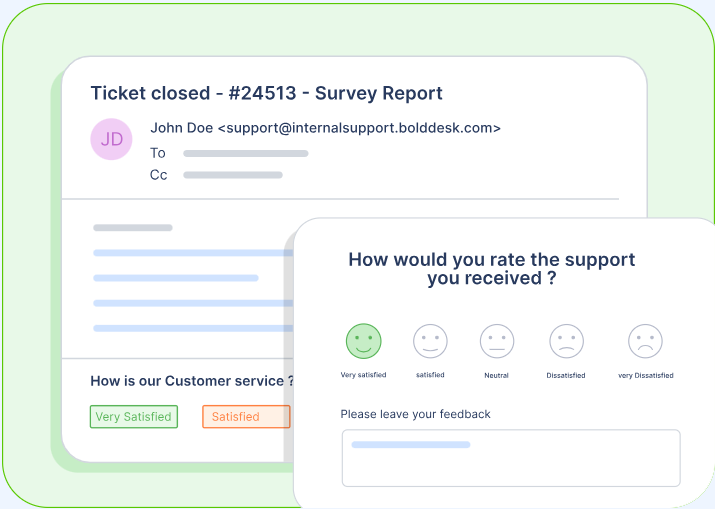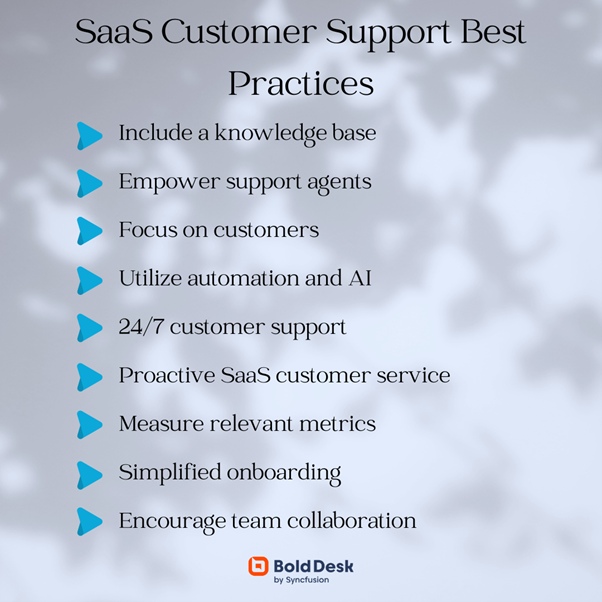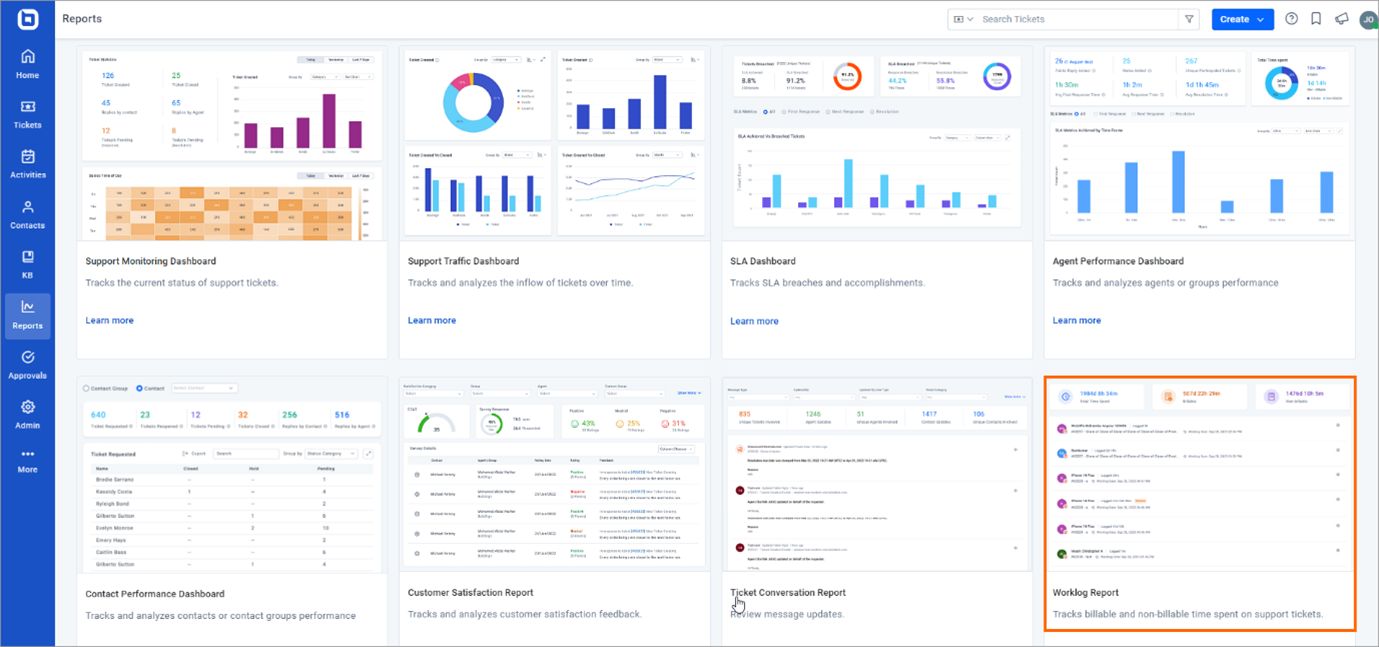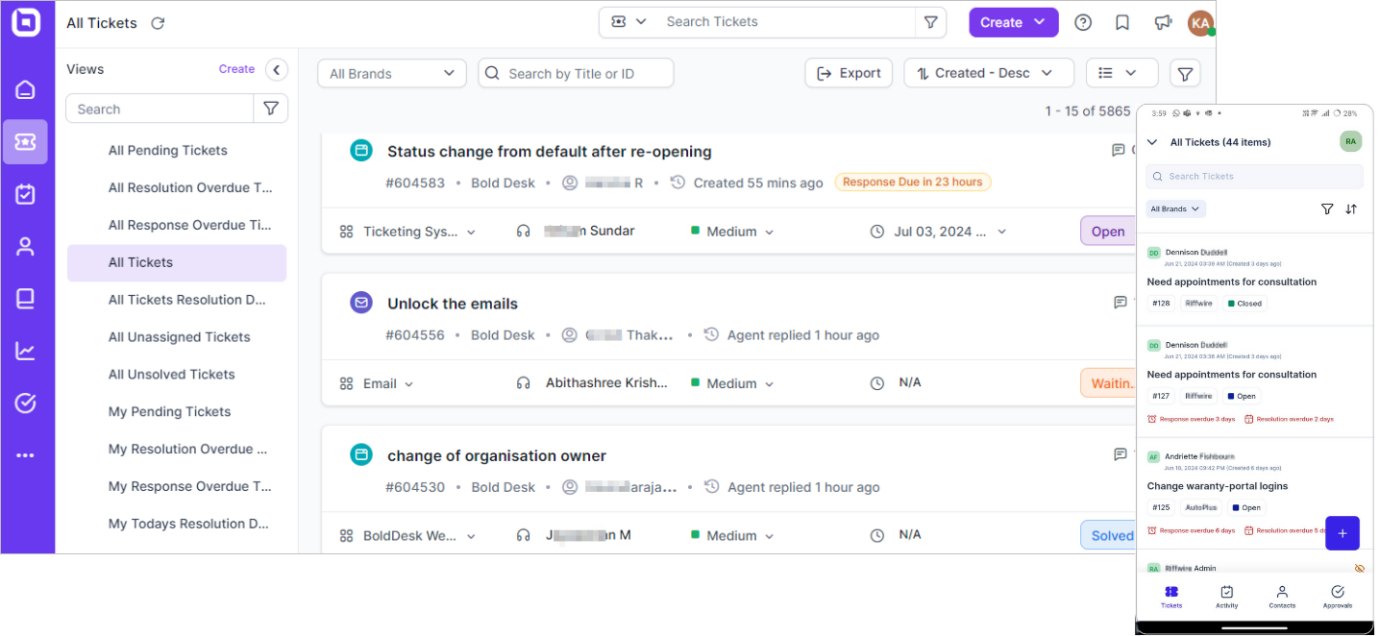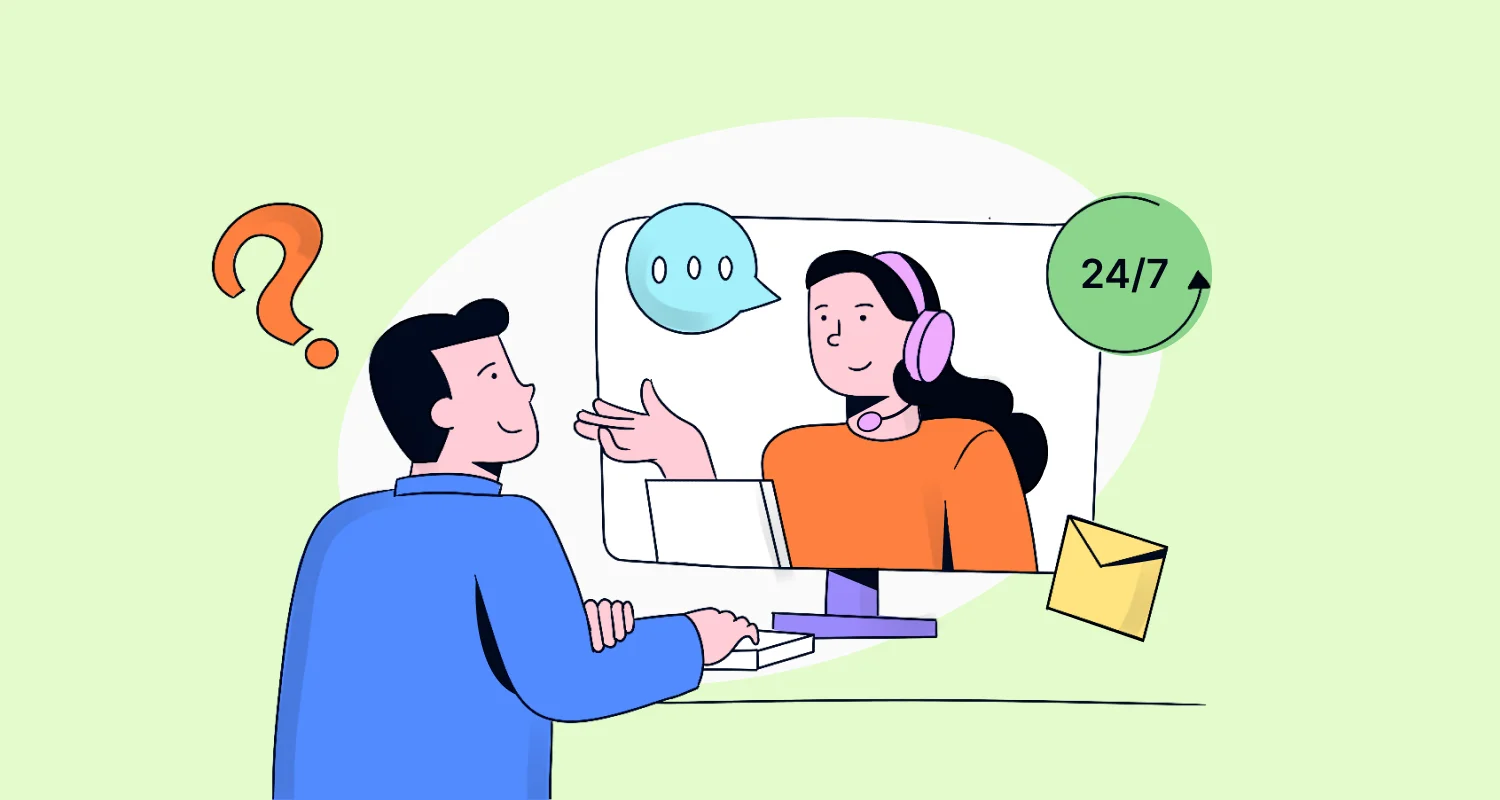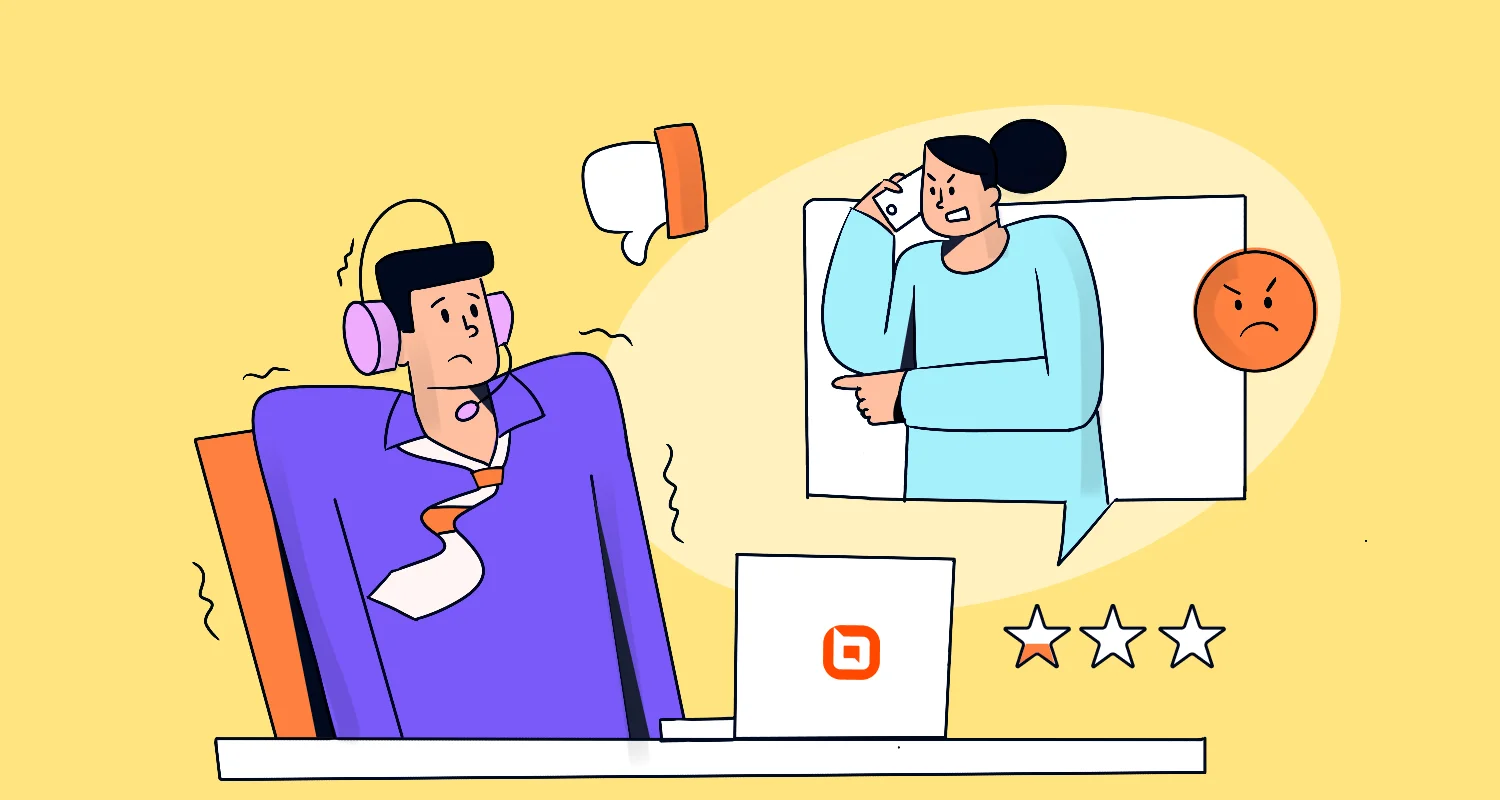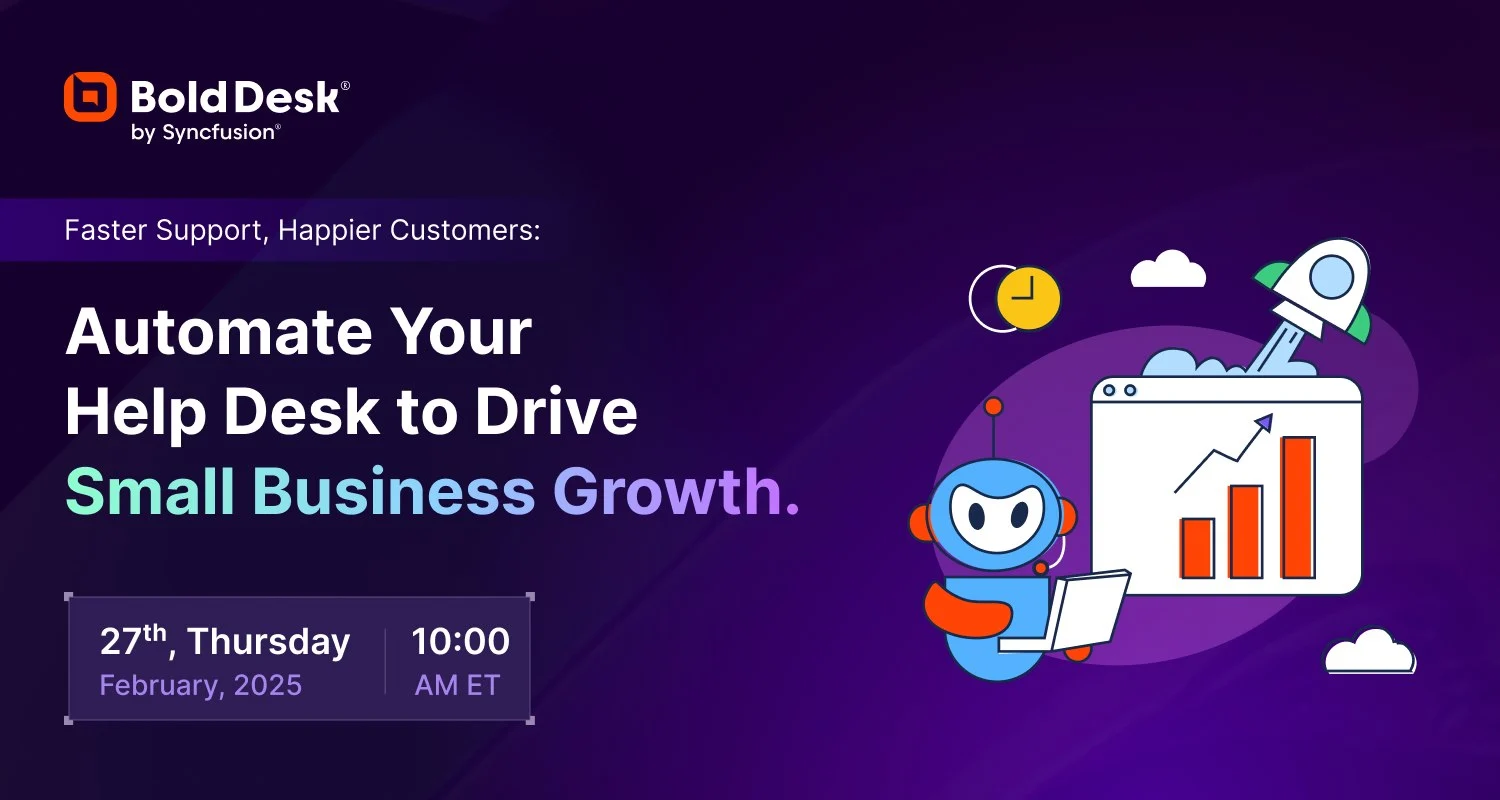Customers decide the fate of your SaaS business. To make that business outstanding, it is important to invest in providing the best SaaS customer service. It means always being there for your customers, from the point they are trying out your SaaS product to the time they may face a challenge using it.
SaaS customer support is therefore a means to create a bond with customers that will keep them hooked on your SaaS brand and business.
In this blog, we’ll explore SaaS customer support, from its definition to the best practices you can adopt to run a cohesive support system in your business.
Components of an efficient SaaS customer support strategy
SaaS customer support is the process of assisting customers to get the most out of SaaS products. The following are some of the important elements that contribute to an effective system.
Proficient SaaS support team
When customers encounter more complex challenges, they turn to support for solutions, making the support team the bridge between your company and customers. Their interactions directly impact your business’s success.
To keep your team at the top of their game, regularly improve their technical skills and enhance their understanding of product features and operations with training.
Training can also equip them with soft skills, such as for active listening, problem-solving, and communication.
Filling in the gaps in their skills and knowledge boosts their confidence and competency, strengthening client relationships with your SaaS brand.
A comprehensive knowledge base platform
SaaS companies can elevate their customer support experiences by documenting, organizing, storing, and sharing information on their products using a knowledge base platform.
An internal knowledge base makes it easier for the support team to resolve issues with easy access to all the required information. Customers can find answers more independently with external knowledge bases.
Knowledge bases can contain:
- User manuals
- FAQs
- Standard operating procedures (SOP)
- Troubleshooting guides
- Tutorials
- Onboarding materials
Scalability
SaaS businesses strive to expand and cater to a wide range of clients. As their customer base grows, the likelihood of the number of SaaS customer service requests increasing is high.
It becomes necessary to adjust your SaaS customer service to still be able to meet demands without compromising on quality.
This can be achieved by:
- Increasing the number of support agents to serve the growing customer base.
- Using scalable SaaS support tools with features like omnichannel support, automation, and artificial intelligence to streamline operations and lighten the workload for the support team.
- Staying informed about market demands through research, enabling the support team to remain flexible and responsive.
Effective customer support tools
Having the right tools for SaaS customer support makes your team more productive. Teams can enhance productivity by:
- Using artificial intelligence (AI) for response generation and ticket triage.
- Handling manual and repetitive tasks using automation.
- Organizing customer communication using an automated ticketing system.
This leads to positive support experiences for both the support team and customers.
Ways to measure SaaS customer support
In order to improve customer support, companies need to track the proper customer service for SaaS metrics to highlight areas of strength and weakness. Insights from these metrics can be used to adjust where necessary.
Following are some of the metrics you can use to measure the quality of your customer support.
Customer satisfaction score (CSAT)
A Customer satisfaction score (CSAT) lets a company know how satisfied customers are with both their purchases and the company in general.
The CSAT is rated on a scale of 1–5. A score of 5 indicates a highly satisfied customer, while a score of 1 indicates an unhappy customer.
Customer effort score (CES)
Customer effort score is a metric used to measure how much effort it takes for customers to use products or services they have purchased from your company.
A high effort score indicates there may be some obstacles you can help clear or additional guidance you can provide.
Average resolution time
This is a metric used to measure the time taken to resolve support tickets to the customers’ satisfaction.
A PwC survey indicated that close to 80% of U.S. customers value speed as one of the most important factors in driving a positive customer experience.
First response time
A metric that measures the amount of time it takes for support agents to provide the first response to a support ticket.
First contact resolution
First contact resolution is used to measure the percentage of tickets solved by a support agent with one reply.
Best practices to improve SaaS customer service
Practicing quality SaaS customer service is necessary in a highly competitive business world. The end goal is to resolve customer’s concerns in a timely manner, leading to satisfaction and customer trust.
Following are some best practices for customer service to implement.
Offer a knowledge base
Empowering employees with a knowledge base enables them handle tasks independently.
Offering an external knowledge base to customers helps cut costs and relieve your support team, as they can find answers to questions and simple issues themselves.
This improves team productivity and results in higher customer satisfaction rates.
Empower your support agents
Effective SaaS customer support requires more than just hiring talented individuals. It involves ongoing training of support agents in both technical skills and soft skills to improve how they interact with customers.
Additionally, tools like artificial intelligence can help by giving accurate reply suggestions to customer questions and summarizing long ticket threads.
As previously described, a knowledge base makes it easier to share and find product and company information.
Stay focused on customers
Putting customers at the center of a SaaS customer support system means focusing on their satisfaction.
When the customers feel valued and appreciated through positive SaaS customer service, it makes the SaaS business more profitable in the long run.
Additionally, it improves brand perception, meaning more customers will be willing to work with your company because of the established customer-first reputation.
Utilize automation and AI
The integration of artificial intelligence in SaaS customer support makes customer service simpler.
For example, AI can analyze sentiment in customer communications to determine the appropriate tone for a reply, summarize ticket details, and generate responses for simpler questions.
It reduces the workload of support teams, making them more effective.
Automation efficiently handles repetitive tasks, saving time that would otherwise be spent on lengthy processes.
For instance, automated ticket assignment feature assigns tickets to the most suitable agent based on their urgency and nature.
24/7 SaaS customer support
Providing 24/7 SaaS customer support requires round-the-clock availability to ensure customers’ issues are resolved as quickly as possible.
By offering 24/7 service in your SaaS customer support, customers in every time zone will be assured of assistance when things go wrong, particularly of concern for software needed for essential services.
For smaller companies who struggle to provide live support after local business hours, having a knowledge base and a customer self-service portal allows customers to solve at least some of their issues independently.
Provide proactive SaaS customer service
Proactive customer service is the process of identifying a problem and offering solutions before your customers are significantly affected.
This can be achieved by:
- Providing self-service options.
- Regularly contacting customers to gain their feedback.
- Interacting with customers through social media platforms.
- Understanding customer needs.
Identify the most relevant metrics to measure
When offering SaaS customer service, you should always be aware of how you perform in different aspects of the support operation.
Consider using the reporting and analytics tools often found in SaaS help desk software to keep track of performance . For instance, you can monitor:
- The productivity of each support agent and team.
- How satisfied customer are with the support they receive.
- The volume of resolved, pending, and unresolved tickets.
- Rates of response and resolution.
This makes it possible to identify areas that require improvement and drives informed decision-making, thus making the support experience better for the customers.
Simplify onboarding processes
Customer onboarding is about providing necessary help to new users, enabling them to get started with a product with ease.
To make the SaaS onboarding process smoother:
- Always send a welcome message.
- Customize and personalize onboarding.
- Include an informative product tour.
- Introduce the self-help and support options available.
Encourage team collaboration
Support teams require adequate information on a product to handle customer concerns as they arise.
Technical information to be relayed to the customers normally comes from the product team. The use of collaboration tools such as Microsoft Teams and Slack for customer service ensures teams can easily communicate and share files, making support faster and smoother.
The product team also has to involve the support team in their product development process and internal meetings. The support team has a much better idea of customer needs and preferences from direct communication.
The two teams can gain valuable information from each other, which can be used to enhance the company’s offerings and customer service.
Benefits of SaaS customer service
Providing the best possible customer support in your SaaS business leads to:
- Brand loyalty
- Growth in sales and profits
- Better planning structures for the future
- Increased conversion rates
- Customer retention
- Understanding how customers interact with your company and products
Streamline your SaaS customer support operations with BoldDesk
BoldDesk is a SaaS customer service tool that has features and functionalities to help your support team resolve customer concerns in a fast and accurate manner. It lets you provide outstanding customer service at an affordable price.
The following are the features that make BoldDesk one of the best SaaS customer support tools:
- Ticketing software: BoldDesk converts customer communications into tickets. It categorizes, prioritizes, and routes the tickets to appropriate agents for resolution.
- Automation: Create a customized workflow that performs manual and repetitive tasks, freeing your agents to do more complex tasks.
- Knowledge base: Set up a repository where company information is stored for easy access by agents, or one where customers can go for self-service support.
- Artificial intelligence: BoldDesk’s knowledge base software includes AI assist features that summarize long ticket threads, search documentation for answers, and suggest phrasing of answers, making agents’ work easier.
- Live chat: Respond to customers instantaneously with a human feel and personalized customer support.
- Omnichannel inbox: Support agents can now access all customer requests from one unified platform for efficiency and deliver a seamless customer support experience.
- Integrations: Integrate BoldDesk with your other customer service apps and tools to simplify support operations.
- Contact management (CRM): Organize contacts and contact groups for easier interaction with customers.
- Mobile application: Agents can use the customer service software on their mobile phones to support their customers conveniently from anywhere.
- Customization: Use a wide range of customization options to tailor BoldDesk to suit your business
- Reports and analytics: Utilize a built-in dashboard and reports feature that displays your support metrics with real-time data for analysis.
Growth for any SaaS company starts with how customers interact and engage with them and their products.
Offering positive SaaS customer service is therefore a chance to leave a great impression that spreads a positive reputation.
BoldDesk has all the features a company needs to streamline its customer support operations and build stronger customer connections.
Book a live demo or start a 15-day free trial today to experience first-hand how BoldDesk’s features can serve your support team. Leave a comment below if you have any questions.
Related articles

